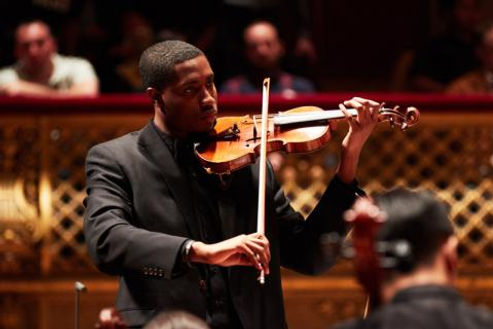By: Teresa Gong
The classical music industry, including American orchestras, has faced criticism in recent years for its lack of diversity and underrepresentation of Black musicians.
Although the number of female conductors of American orchestras has nearly doubled since the 2013-14 season, the shift underscores the slow pace of change in classical music and the need to hire more people of color. There are different opinions on how to tackle the problem. Some suggest blind auditions, which were introduced in the 1970s to reduce bias but are now being questioned as a potential barrier to the inclusion or more people of color. While some suggest considering race and ethnicity in the hiring process, others argue that blind auditions are necessary for complete fairness.
“I have never felt so much urgency for change and seen so much sincere work for change,” said Simon Woods, the president and chief executive of the League of American Orchestras. “But there’s no denying the fact that we, as a field, have to believe it can go faster.”
Orchestras have been making efforts to include women and people of color by supporting talent development programs like the National Alliance for Audition Support. This program, from Andrew W. Mellon Foundation, has helped Black and Latino musicians succeed in auditions, with approximately 150 individuals winning positions in American orchestras since 2018.
“There’s really not a shortage of talent,” said Afa Dorkin, the president and artistic director of the Sphinx Organization, which assists the audition program. “There are ranks and ranks of Black and Hispanic musicians who certainly are ready to perform as part of major American orchestras. And we’re not engaging nearly enough of them yet.”
Efforts to increase diversity in the conducting field have yielded positive results, with more people of color taking music director and assistant conductor roles. Jonathon Heyward will become the first Black music director of the Baltimore Symphony Orchestra, and Gustavo Dudamel, a Venezuelan conductor, will become the first Hispanic leader of the New York Philharmonic in 2026. However, women continue to be significantly underrepresented in music director positions at top-tier orchestras.
“We are making strides, but it is incredibly challenging because the systems in classical music are not made to be individualistic,” said Lina González-Granados, the resident conductor of the Los Angeles Opera, “We are just treated like monoliths. You don’t think about women of color. You don’t think about mothers. You don’t think about older women or students. Everyone is confronting many challenges and has a glass ceiling that they are breaking.”
The number of black employees represented in orchestras has seen incredible growth, particularly since 2020, but people of color remain underrepresented in leadership roles. Although progress has been slow, there is growing recognition of the disparities and a rising movement among artists from underrepresented groups to create their own opportunities and support each other. Efforts are being made to address the issue, but more needs to be done to support and promote diversity in orchestras, leadership positions, and boards.
“Rather than waiting for the system to make room for us, we’re creating our own opportunities,” said Johnson, who is Black. “We’re building our own network. We’re making a path for each other.”











